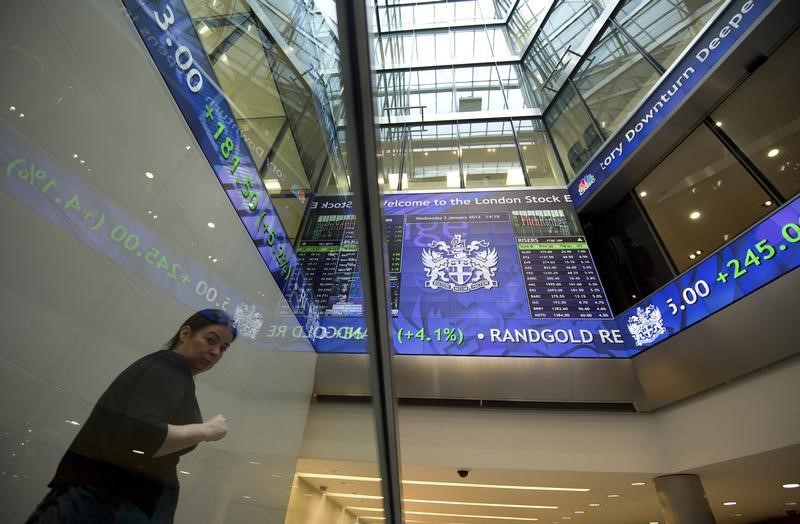By Lionel Laurent
PARIS (Reuters) - Proposed EU-wide caps on anonymous "dark" trading and off-exchange deals would have hit nearly every top British stock last year had they been in force, according to data from the London Stock Exchange.
The data, gathered for clients and unveiled at a trading-technology conference in Paris on Wednesday, highlights the possible widespread impact of the new rules, which are set to be introduced in 2017 and are designed to boost transparency.
Dark pool trades allow for prices and order sizes to be disclosed only once the transactions close to avoid moving prices on conventional bourses, helping protect investors who want to place major buy or sell orders.
According to the LSE data, based on 2014 trading volumes for stocks that were part of the FTSE 100 blue-chip index for at least one calendar quarter, 104 out of 105 stocks were in breach of the proposed cap restricting anonymous trading to 8 percent of total EU-wide trading of a particular security.
While caps on dark pool transactions may force more business onto traditional "lit" bourses, some traders fear they will be exposed to wider price swings if markets can see in real time significant trades tied to sensitive investments.
Likewise, they fear increased volatility from managing the new limits, notably when a security nears the upper limit of the planned cap.
The penalty for breaching the limit is set to be a six-month block on these types of trades for the security concerned.
EU regulators are still working on the finer detail of how the new cap will work in practice and large block orders above a certain size would be allowed to continue.
While dark pools have come under regulatory scrutiny amid concerns they are too opaque and may put investors at risk, many investors are also unwilling to spurn them entirely because of the privacy they offer when trading big blocks of shares.

Martin Wheatley, chief executive of Britain's Financial Conduct Authority, which regulates the LSE, said in February the watchdog was "struggling" with the practicalities of how it will supervise and monitor the cap.